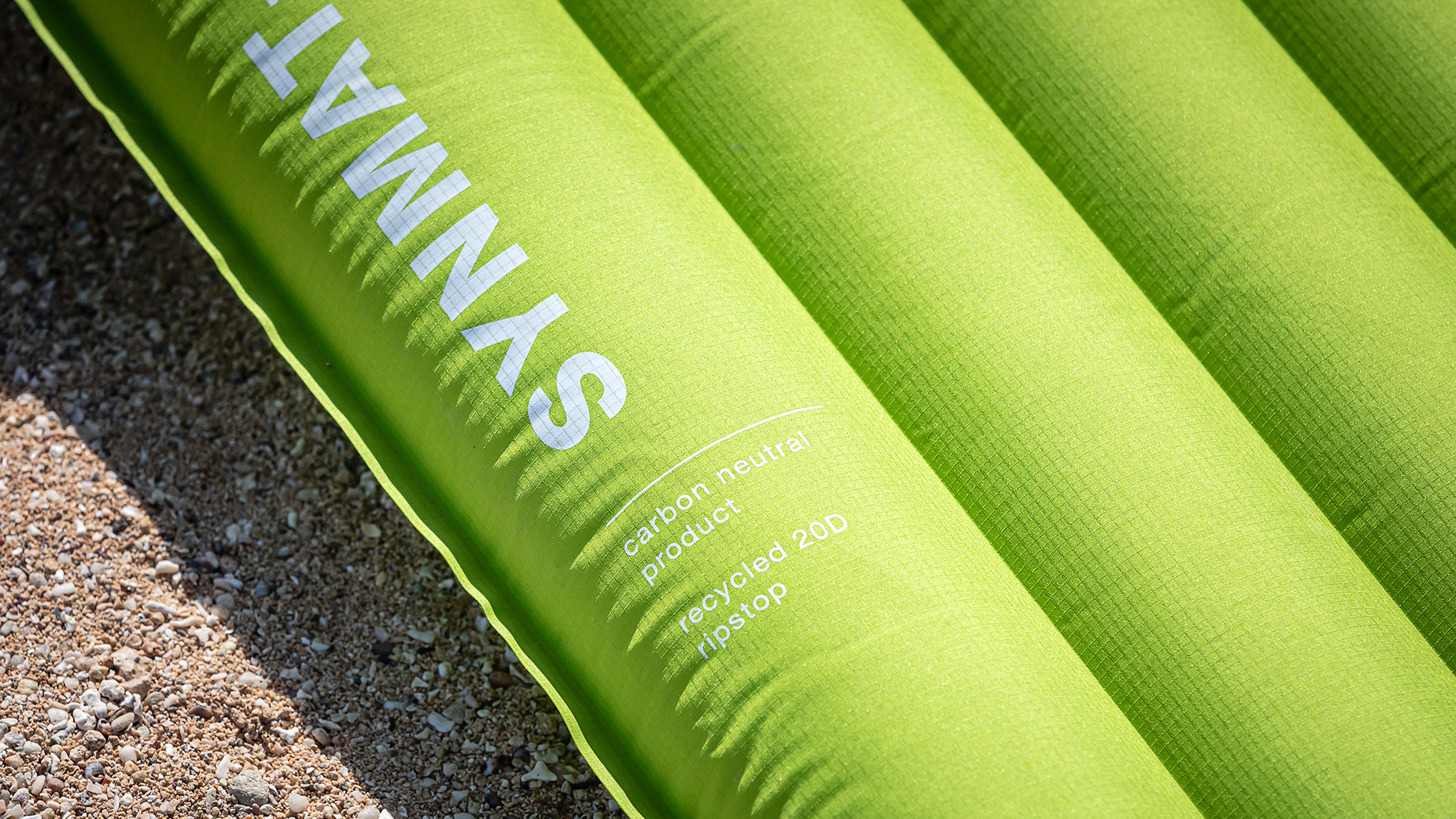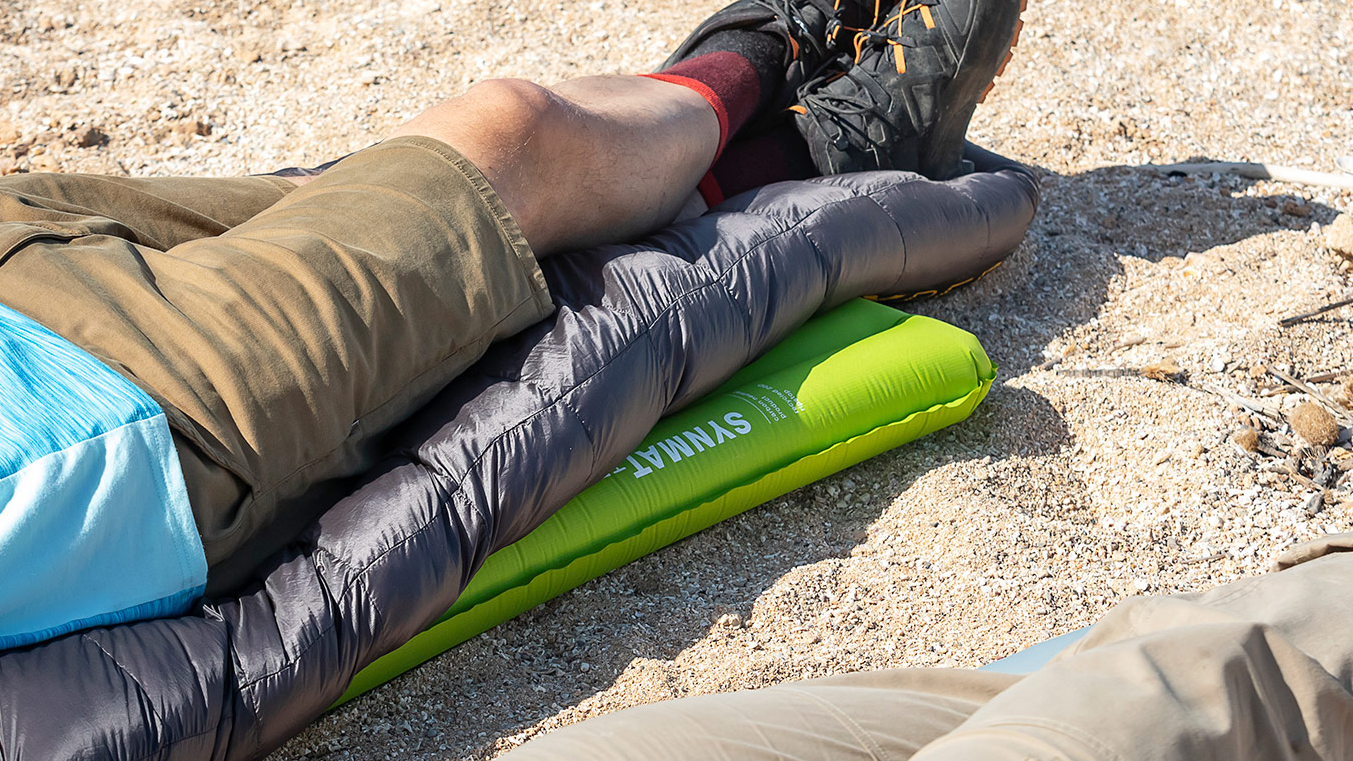
Meet the reviewer
Exped Ultra 3R sleeping mat: first impressions
• List price: $159.95 / £180
• Weight: 405g / 14¼oz (S) to 560g / 19¾oz (LW)
• Area: 160 x 52cm / 63 x 20½in (S); 183 x 52cm / 72 x 20½in (M); 183 x 65cm / 72 x 25½in (MW); 197 x 65cm / 77½ x 25½in (LW)
• Thickness: 7cm / 2¾in
• Packed dimensions: 23 x 10.5cm / 9 x 4.1in (S); 23 x 11cm / 9 x 4.3in (M); 27 x 11.5cm / 10.6 x 4½in (MW); 27 x 12cm / 10.6 x 4¾in (LW)
• R-value: 2.9
• Temperature rating: -5°C / 23°F
• Color: Lichen
• Compatibility: Trekking, expedition, mountaineering, long-distance hiking, bikepacking
This neat little sleeping pad packs in a lot for something so compact, taking up little more space than a water bottle. It’s made from a rugged 20D ripstop fabric, and the first thing I noticed was the quality of the material.
The pack comes with a matching green pouch, a green inflatable sleeping mat, rolled up, and a bright yellow dry bag that seals over the valve, which is then scrunched down using a sack of air that can be squashed to help with inflating. For deflating, the deflate valve is simply pulled out and air is compressed out until the mat becomes a thin green pancake, ready to be rolled and stashed in the pouch.
The benefit of a pump bag is that it helps prolong the product’s lifespan, as it avoids putting moisture into the sleeping mat. It’s also not dependent on strong lung power – a bonus if you’re at altitude – or batteries.

Exped Ultra 3R sleeping mat: on the trails
I tested the Exped Ultra 3R during adventures on Ireland’s Donegal peninsula, and on the coast of Mallorca in the Mediterranean.
I’m a cold sleeper who often struggles to stay warm overnight, so when testing the mat I wanted to make sure it was thick enough to offer me adequate insulation from the cold ground, and keep me warm without any surprise cold spots.
I’m 5’5” lying down and I only really sleep on my side if it’s chilly. Luckily, the shape of the sleeping mat didn’t feel so narrow that I was in danger of rolling off, or worse, sliding off the mat in the middle of the night.
The Exped Ultra 3R was comfortable thanks to the thickness of the air cushion, which uses a princely 7cm / 2¾in thickness to help cradle the body. There was also lofting insulation on the top and bottom of the air chambers to provide warmth throughout the lifetime of the mat. I like the use of the 20D ripstock fabric, but it would have been nice to have a slightly grippier top surface, as it was very smooth and shiny and made it easy to slip down the mat in the night.

Thanks to the Exped Schnozzel pump bag – a dry bag that seals over a valve on the sleeping mat – it’s easy to inflate the mat. The sleeping mat is clearly marked up to tell you which valves inflate and deflate, keeping both processes easy, but anyone who’s never used inflating mats might benefit from double checking the right valves are open and closed!
Another benefit of the Exped Ultra 3R mat is its light weight. It weighs less than 500g / 17.6oz for the M version, will pack down to 23 x 11cm / 9 x 4.3in and still fit an average person. I tested the Exped Ultra 3R sleeping mat in size M, which was 183cm / 72in long, and found it long enough for me as I’m 166cm / 5’5”. Having the options for a wide version as well as a longer one is another bonus as it allows for a more customisable fit depending on how you sleep. There’s also the option to buy a double-size version of the mat. For those who sleep on their side, or need to shift their body in the night, the mat is wide enough to allow this and it wasn’t overly squeaky or rustly when I moved on it.







